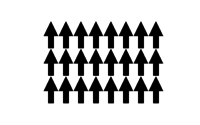
Photo from wikipedia
Cobalt-doped zinc oxide, i.e., $${Zn}_{1-x}{Co}_{x}O$$ (x = 0.0, 0.02, 0.04 and 0.06) nanoparticles were synthesized by co-precipitation method. The X-ray diffraction patterns confirmed the formation of wurtzite structure in all prepared samples.… Click to show full abstract
Cobalt-doped zinc oxide, i.e., $${Zn}_{1-x}{Co}_{x}O$$ (x = 0.0, 0.02, 0.04 and 0.06) nanoparticles were synthesized by co-precipitation method. The X-ray diffraction patterns confirmed the formation of wurtzite structure in all prepared samples. Impedance spectroscopy was employed to understand the dielectric as well as resistive characteristics of synthesized samples. The partial replacement of Co at Zn lattice sites not only reduced the dielectric properties but also enhanced the resistive properties of prepared samples up to x = 0.04 of Co doping. The leakage current density curves displayed a significant reduction in leakage current for x = 0.04 sample, whereas the leakage conduction mechanism transformed from an ohmic to space-charge-limited conduction with increasing electric field. Moreover, the energy band gap was found to increase gradually up to x = 0.04 of Co doping and afterwards band gap started to decrease. Here, the observed variations in the obtained results are explained in term of variation in crystallite size and doping-induced defects. Based on the obtained results, it is proposed that the sample with x = 0.04 is a potential candidate for the optoelectronic and high-frequency applications.
Journal Title: Journal of Materials Science: Materials in Electronics
Year Published: 2020
Link to full text (if available)
Share on Social Media: Sign Up to like & get
recommendations!